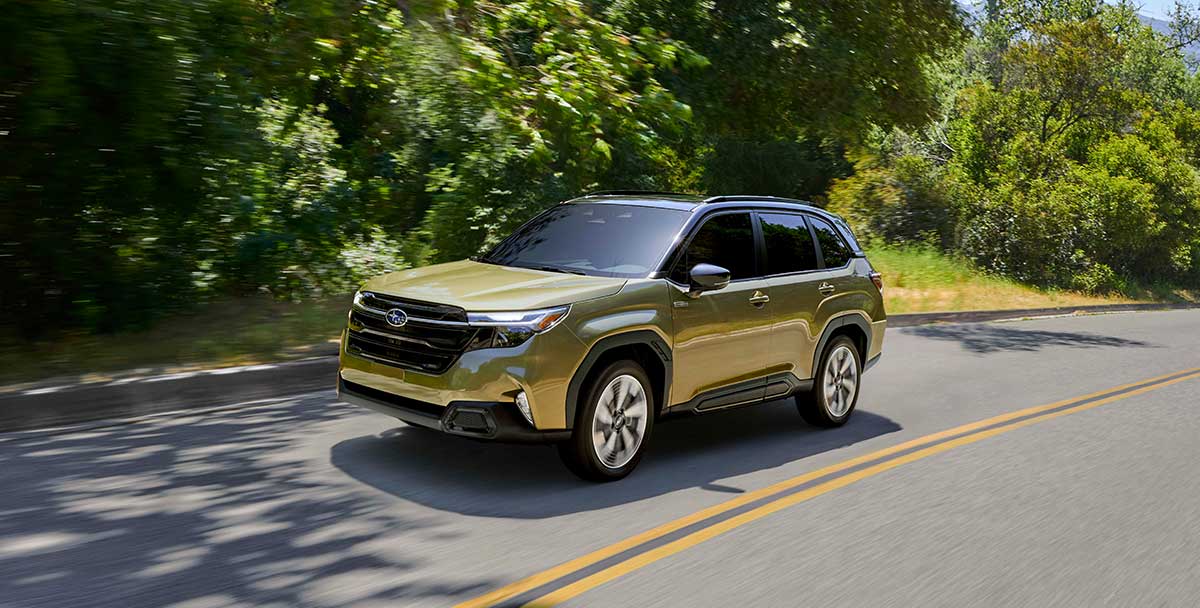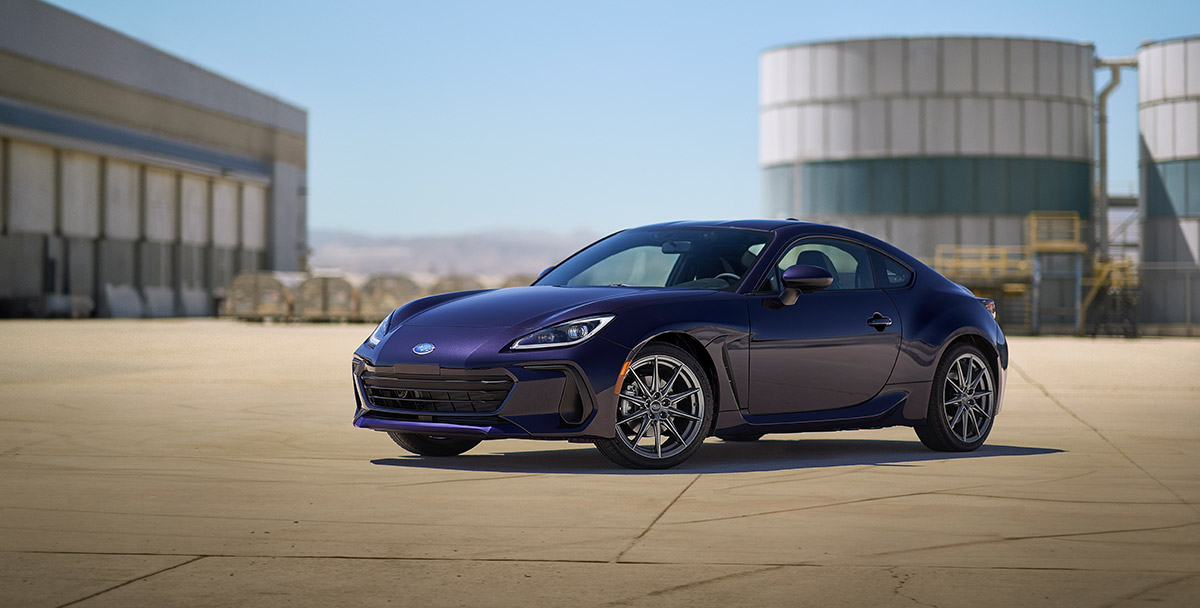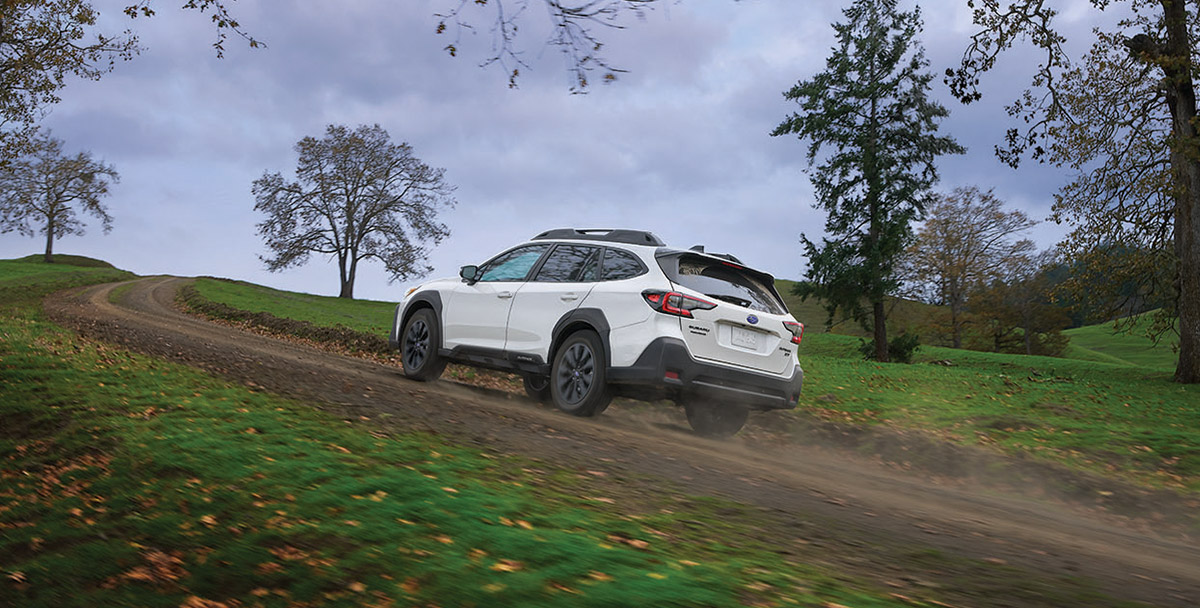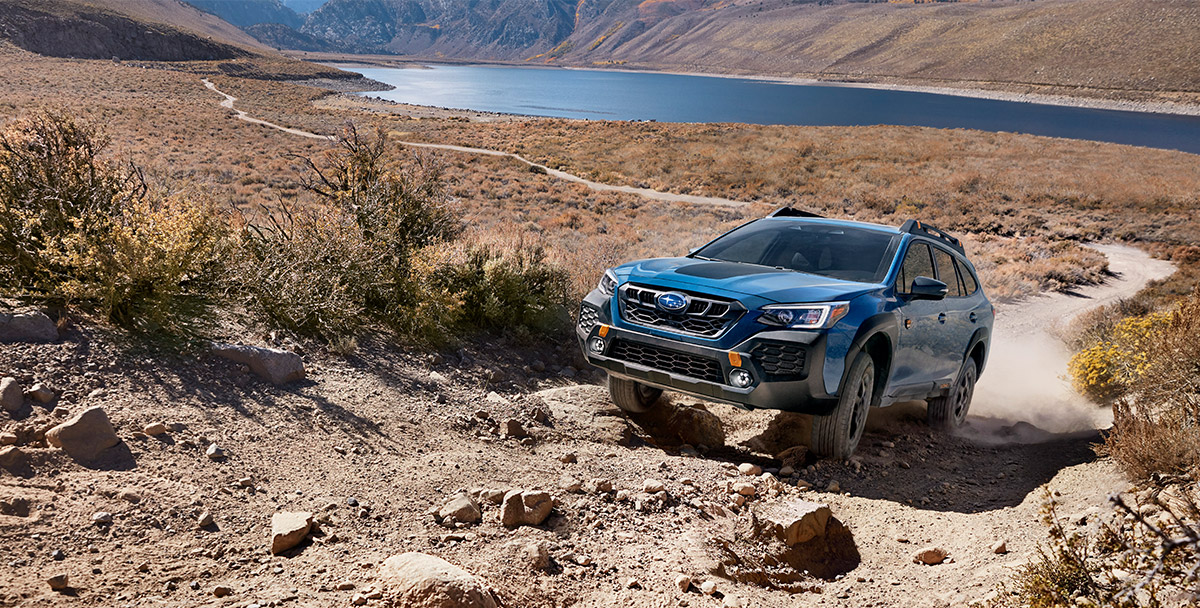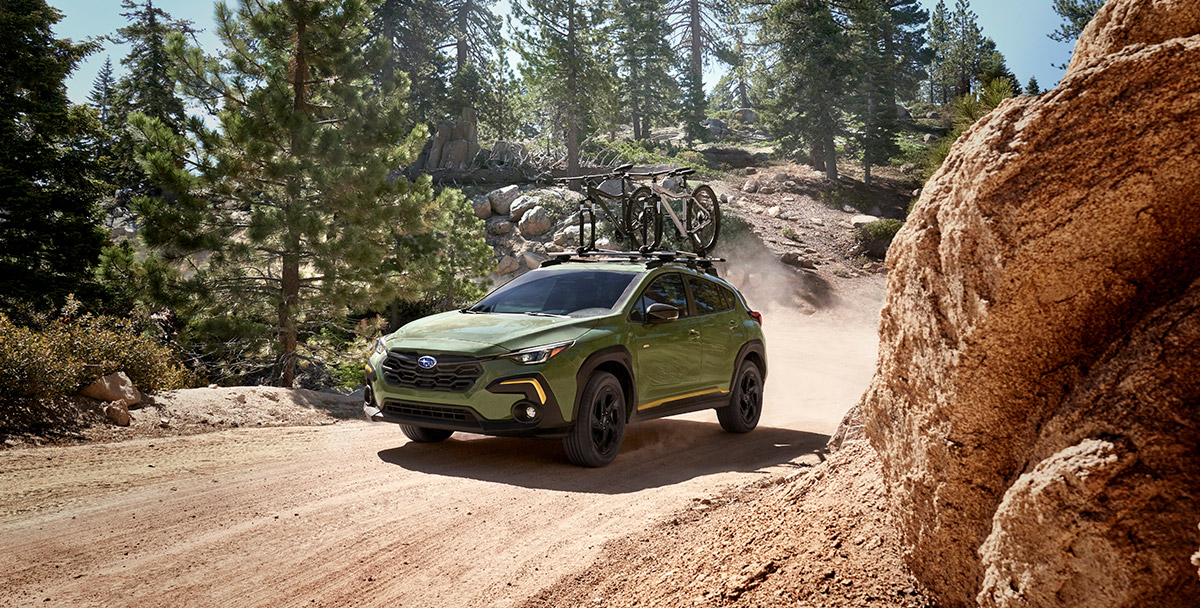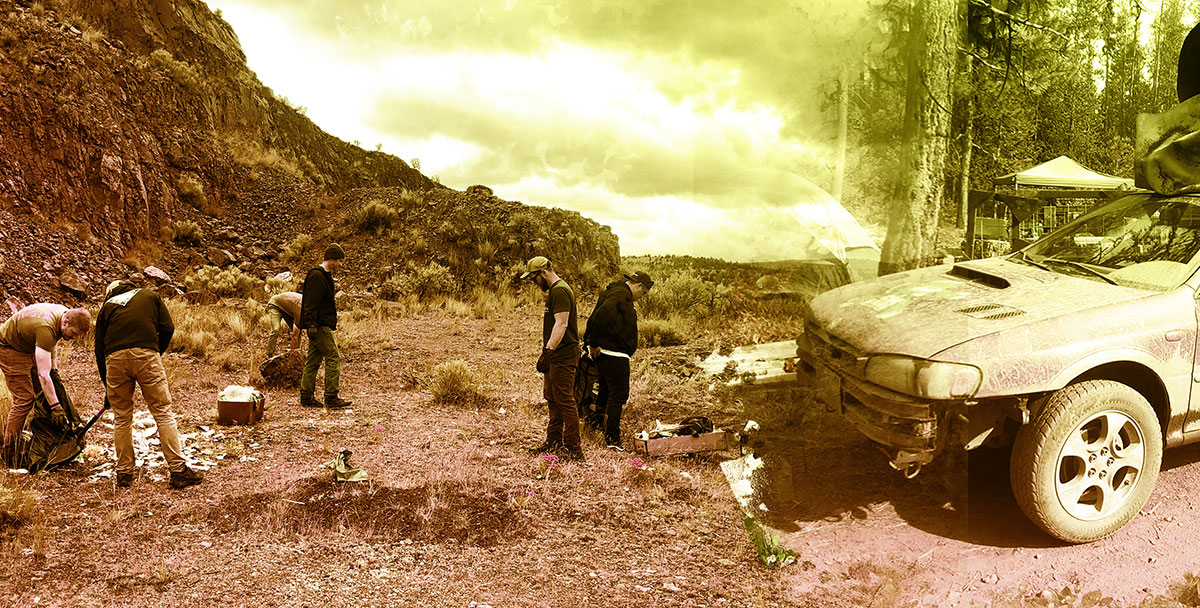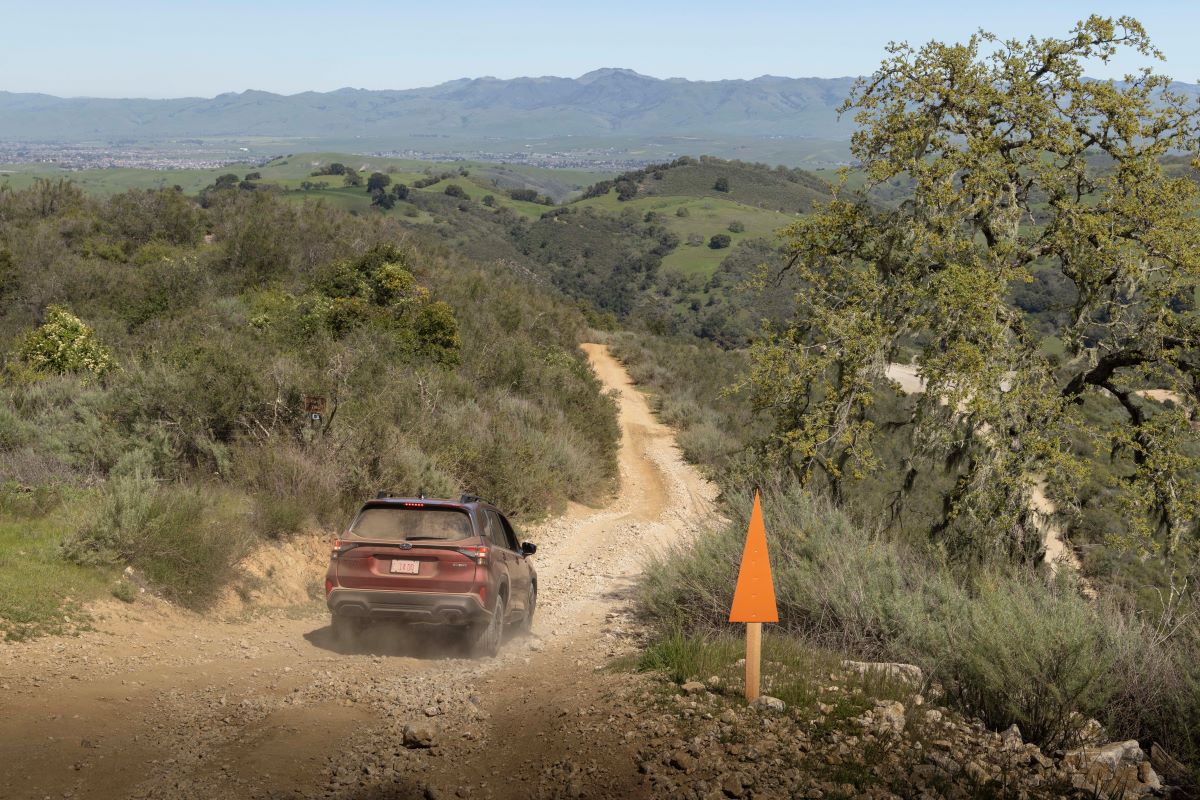
The San Francisco Bay Area might be the ultimate place to evaluate a hybrid vehicle, especially one with off-road aspirations. Our drive through the peninsula covered La Honda Creek’s twisting, turning asphalt stretches, fast runs on the 101, distance cruising on U.S. Highway 1 through Half Moon Bay, and a full day’s worth of off-road exploration in Hollister. It was the perfect combination of terrain to wring out the first mass-market Subaru hybrid vehicle, the 2025 Forester Hybrid.
With the 2025 Subaru Forester Hybrid, a fuel economy improvement was the prime directive but never at the expense of the capabilities that make the Forester one of the top-selling Subaru vehicles in the lineup. Think of the Forester Hybrid as “Forester Plus,” retaining all of its superlatives while improving fuel economy and horsepower simultaneously. The only thing Subaru subtracted from the Forester with an internal combustion engine (ICE) was the spare tire.
No Compromises
Subaru has more than a decade of experience building a hybrid vehicle.
Two hybrid vehicles, actually.
The original Crosstrek Hybrid was a conventional parallel hybrid vehicle sold in California and other states that had accepted the Golden State’s Memorandum of Understanding that accelerated the adoption of zero-emissions vehicles. The second – launched in the 2019 model year with a plug-in hybrid system – was also based on the Crosstrek.
“Neither of these products was really optimized to selling big volume,” says Bill Stokes, Subaru Car Line Planning Manager. And both cars had some compromises. The first-generation Crosstrek Hybrid only offered a significant boost in fuel economy in the city, where it went from an EPA-estimated 25 mpg for the gas models to an estimated 29 mpg. Highway mileage estimates didn’t change, but the combined figure went up by three mpg for Lineartronic® CVT (Continuously Variable Transmission) models.
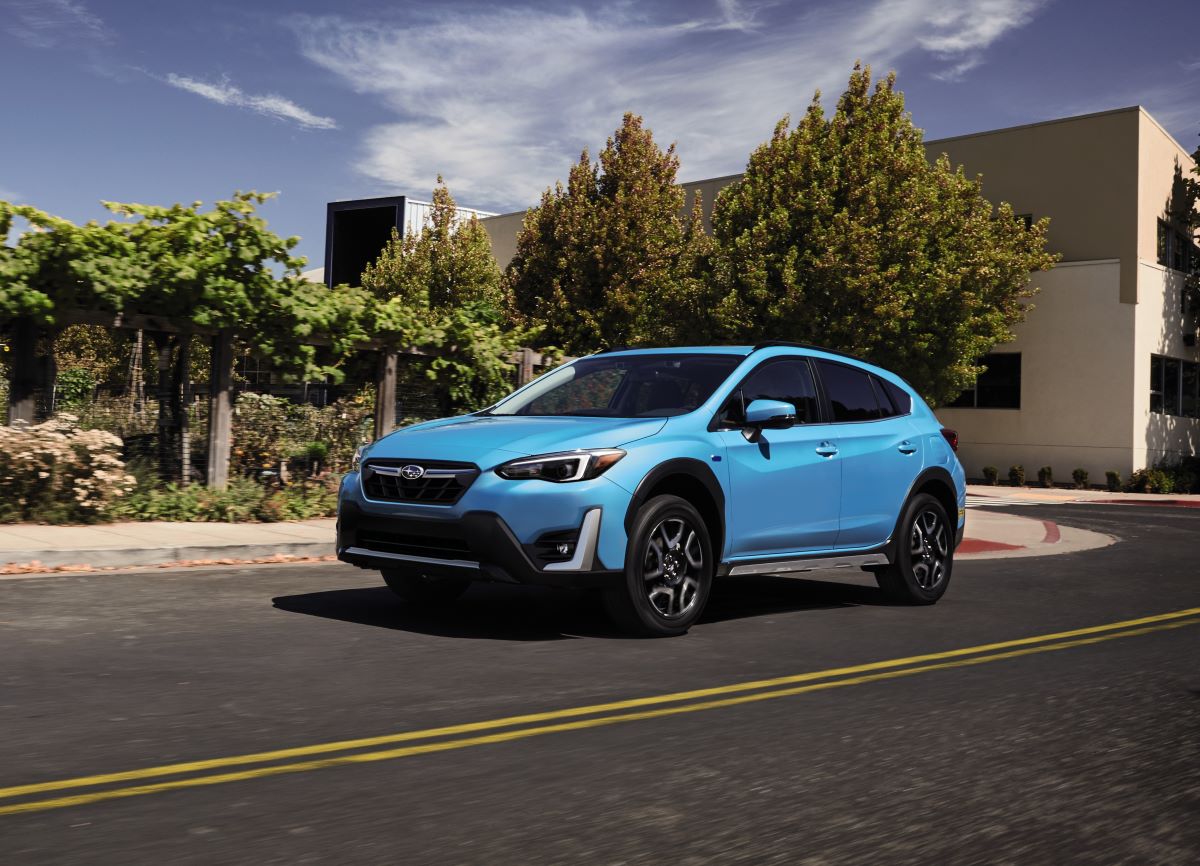
The second-generation plug-in Crosstrek Hybrid boosted the combined figure from 31 to 35 mpg but offered about 17 miles of range on electric power only. And because both vehicles were based on the Crosstrek compact crossover, they lost valuable cargo room to accommodate the battery.
The 2025 Forester Hybrid capitalizes on the education that the Crosstrek Hybrid provided and rolls it out to a nationwide audience. This modern version not only boosts overall fuel economy but also increases performance, retains its cargo volume and allows no compromise on the vehicle’s off-road capabilities. “We’re trying to achieve the best balance of improved mpg with more off-road capability than the standard car,” says Stokes.
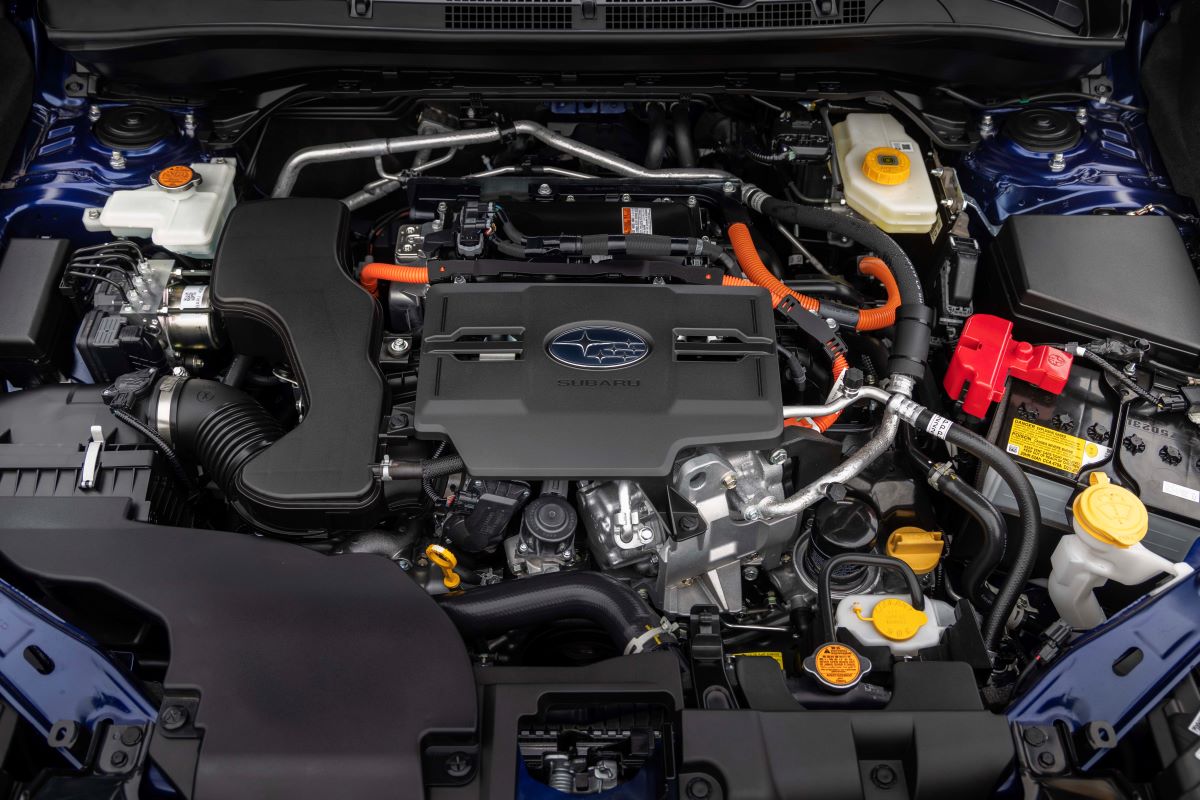
2025 Subaru Forester Hybrid Powertrain
The Forester Hybrid has a next-generation Subaru series-parallel hybrid powertrain. This allows the vehicle to be powered solely by the electric motor and the high-capacity battery or it can solely use the gas engine for power. And finally, it can utilize power from both the gas engine and the electric motor at the same time.
The gas engine is a 2.5-liter SUBARU® BOXER four-cylinder, but it’s been modified to operate on an Atkinson/Miller cycle. Without getting too deep into the technical weeds, an Atkinson/Miller-cycle engine prioritizes efficiency over power density.
“The core of the hybrid system is that there are two motor generator units which are incorporated into the transmission,” says Stokes. Two motor generator units (MGUs) handle different driving operations: MGU 1 manages the auto stop-start function and also charges the battery using engine power, while the “MGU 2 is the main drive motor that powers the all-wheel drive system,” Stokes explains.
The final piece of the system is the lithium-ion battery mounted under the rear cargo floor. Stokes notes that it’s “extremely similar” to the 1.1 kWh battery in the current Crosstrek Hybrid.
The battery’s mounting location necessitated the only real subtraction a Forester Hybrid owner will experience: the spare tire. While gas-powered Forester owners get a compact spare (or a full-size spare for Forester Wilderness owners), Forester Hybrid owners will make do with a tire inflation kit.
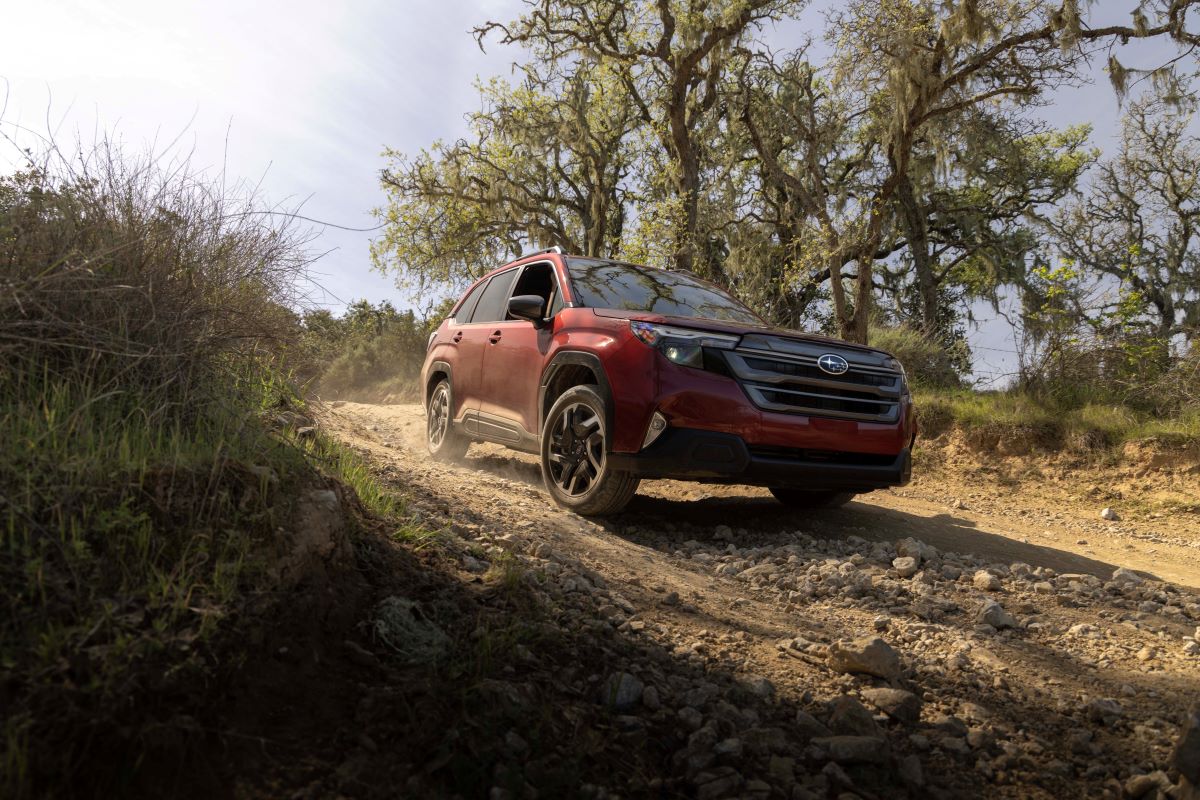
Forester Hybrid Advantage: How It Powers the Rear Wheels
The primary difference between the Forster Hybrid and the Toyota RAV4 Hybrid is the way the rear wheels are powered. “We retain a full-time all-wheel drive system with a mechanical connection between the front wheels and the rear wheels,” says Stokes. The RAV4 powers the rear wheels with a low-power electric motor that provides electric assist. In the Forester, a driveshaft from the transmission mates to a rear differential, an advantage we got to experience firsthand in an off-road course.
We visited the incredible Hollister Hills State Vehicular Recreation Area, a beautifully groomed, over 6,800-acre facility with nearly 200 miles of trails broken up into easy, intermediate, difficult and extremely difficult sections. The Forester Hybrid had no issues negotiating the kind of terrain that most Forester owners are most likely never going to see.
Climbing a long, steep off-road ascent requires a couple of things: traction and momentum. Lose one of those and you end up backing down the hill. The Forester Hybrid provides traction to the rear wheels because that driveshaft is always spinning. The Symmetrical All-Wheel Drive system directs power to the wheels with the most traction.
We attempted the same hill with the RAV4, and it relies much more on momentum than providing traction. The rear electric motor provides assist but only does so after the front wheels have lost traction.
On our way back from the turnaround at the top of a glorious vista, we used X-MODE® to descend the hills and only really had to touch the brake for the most technical sections of the course.
Subaru Forester Hybrid On-Road Performance
The Forester Hybrid is superbly quiet on the highway, thanks to additional sound deadening. We spent the day in the Forester Hybrid Premium, the entry-level trim for the hybrid lineup. It has an 18-inch wheel and tire combination, which makes the ride much more compliant and comfortable than most compact crossovers.
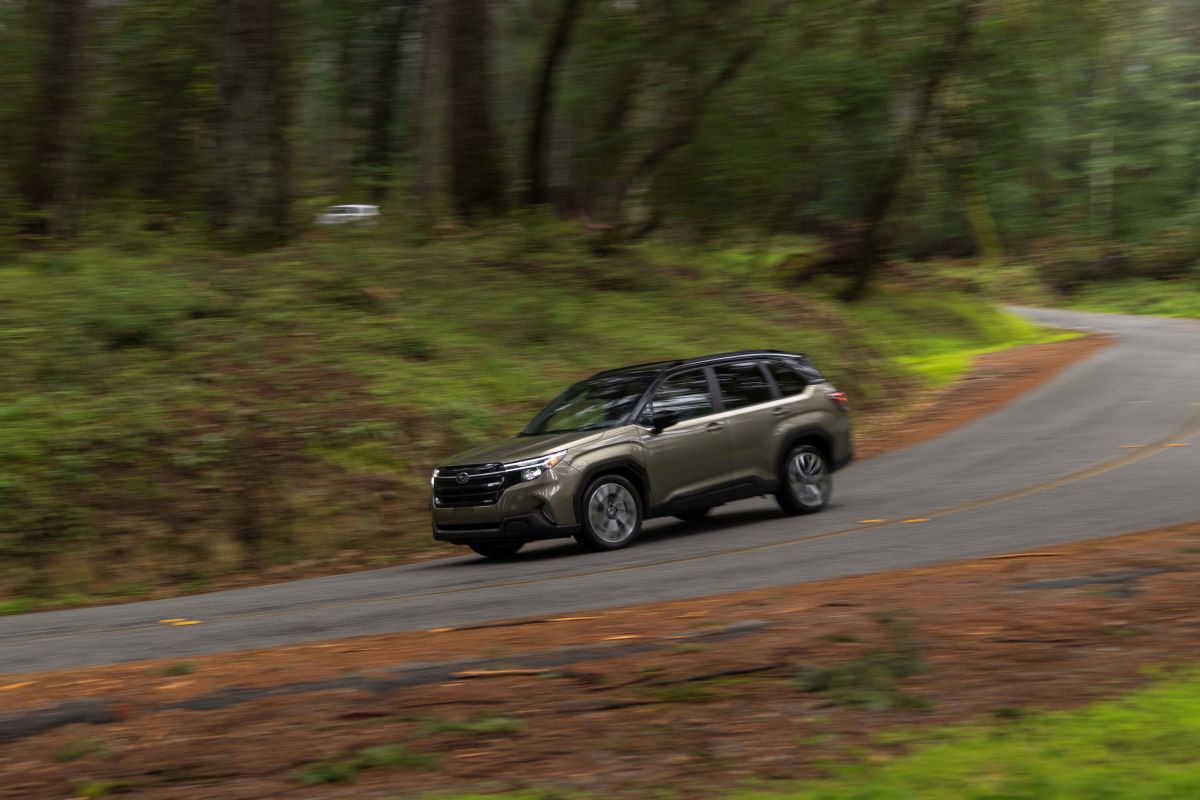
The hybrid powertrain also adds something more: stronger passing and acceleration. The hybrid powertrain adds about 14 hp compared to the conventional ICE vehicle, and it puts it right where you need it – low in the rpm range so merging out onto the highway or passing a slow-moving vehicle is effortless and confidence inspiring.
If you’ve driven a hybrid before, you know that the handshake between the gas engine and the electric motor can be abrupt in some SUVs, but the integration of those power sources is smooth in the Forester Hybrid.
Stokes notes that the paddle shifters mounted behind the steering wheel are present to control engine braking. On a long descent, “it will actually click the engine off, and the Forester will go into EV mode,” he says. “If you click the paddles or you move the shifter into manual mode, it will use engine braking to slow down.”
Subaru Forester Hybrid Exterior Differences
The badging on the Subaru Forester Hybrid is subtle to the point that it’s barely noticeable, looking more like a trim-level badge than an announcement.

The only other exterior changes are limited to colors. Certain colors can be paired with a Crystal Silica Black roof for a two-tone effect, and the Forester Hybrid has a new color: Daybreak Blue Pearl, which combines dark blue with a purple metalflake.
All the other Forester exterior signatures are retained, including the 700-pound static roof capacity that can support a rooftop tent.1
Subaru Forester Hybrid Interior Differences
“The Premium, the Sport and the Limited will all have animal-free interiors,” says Stokes. “This is something that a lot of our customers have been asking for.”
The Premium trim we drove features cloth upholstery with an animal-free steering wheel and gearshift wrap. StarTex® water-repellant upholstery is available on select trim levels, while the top-shelf Touring trim level retains leather upholstery and wraps.
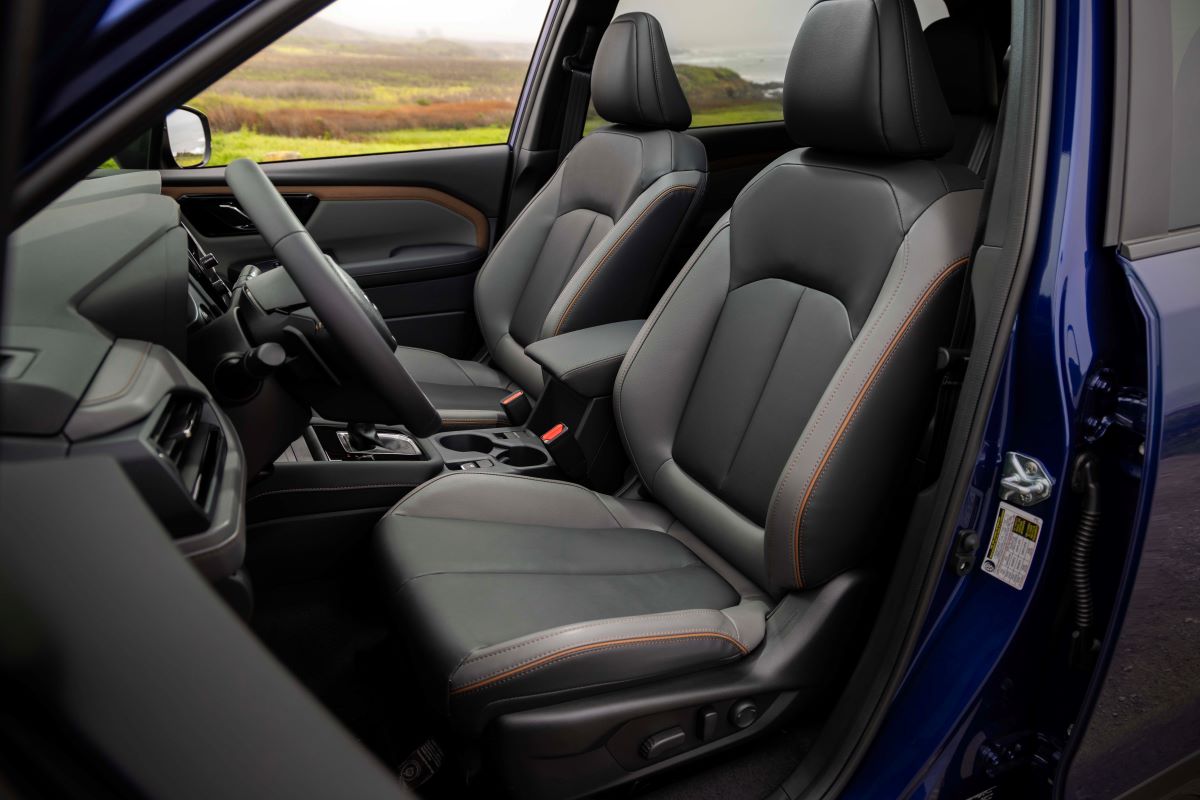
The Forester Hybrid also has a fully digital gauge cluster unique to this model. The cluster allows for a map view with Apple mobile devices, which shows the map between the gauges. “If you’ve got your phone paired with Apple CarPlay and you plug a destination into Apple apps (including Waze), you can view it on the gauge cluster screen,” says Stokes. “Or you can view the embedded nav as well.”
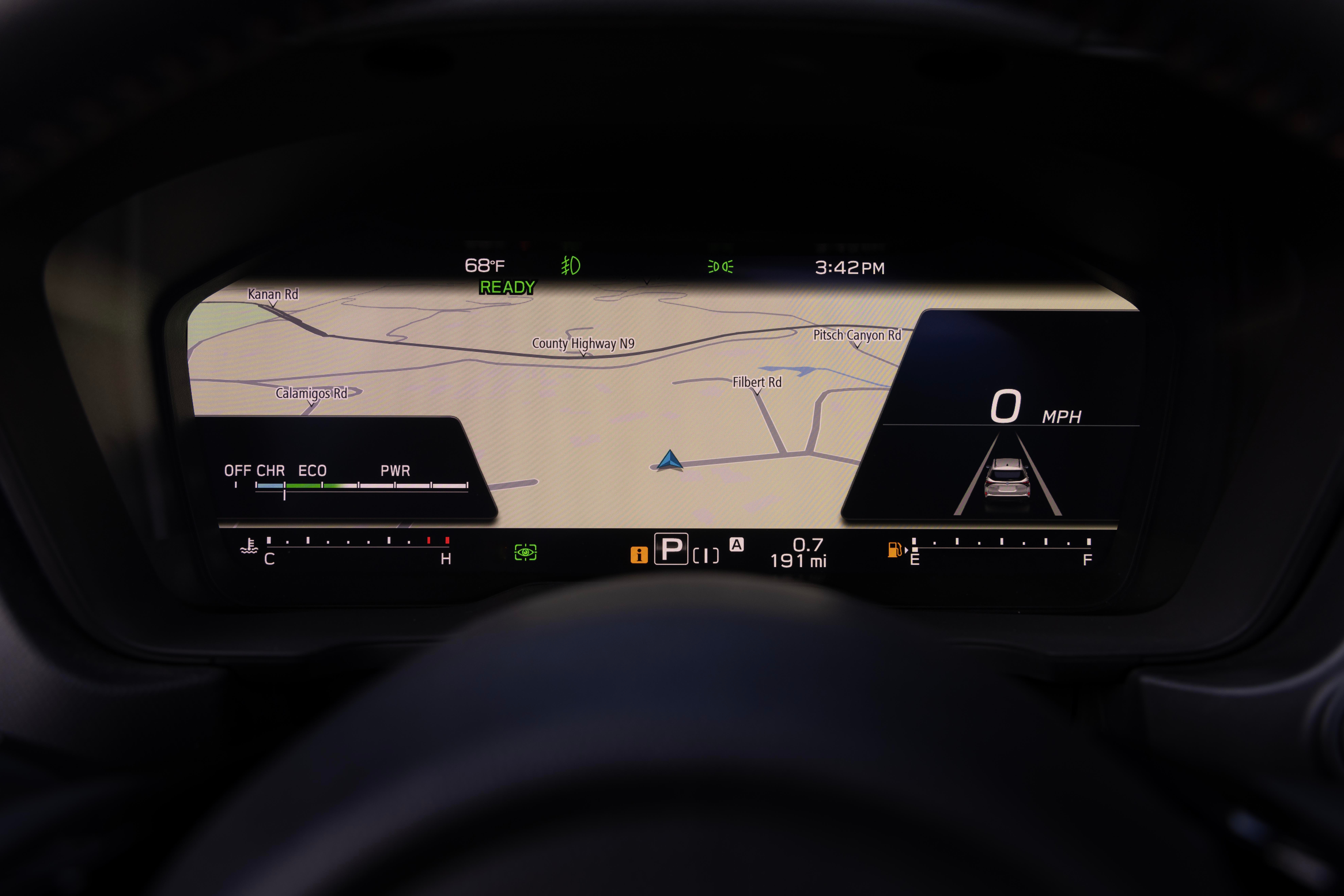
Is the Subaru Forester Hybrid More Expensive?
We’re accustomed to thinking that hybrid vehicles have a hefty price tag compared to their ICE counterparts, but the Forester Hybrid keeps it to a reasonable minimum. The trim ladder for the Forester Hybrid starts at the more popular and much better equipped Premium, with an MSRP of $32,310* for the gas model and $34,995* for the Forester Hybrid version.
Yet even that doesn’t tell you the whole picture. The Forester Hybrid Premium is standard with a foot-activated, hands-free Power Rear Gate,2 only available for an additional $1,200 in the ICE version. The bottom line is that in every Forester Hybrid trim, the price is within $1,400 to $1,500 of its ICE counterpart.
If your vision of what a hybrid is has been stuck in 1999 for the last quarter century, it’s time to see what a modern vehicle like the 2025 Subaru Forester Hybrid offers. You’d expect that the EPA fuel economy estimate would increase by 10 mpg in the city and six or so combined, but you might not expect more passing and hill-climbing power from the combination of the engine and the electric motors.
The 2025 Subaru Forester Hybrid is a vehicle without compromise. Unless you’re staring directly at the badge, you’re just going to think it’s the most powerful Forester available.
Apple® and Apple CarPlay® are registered trademarks of Apple Inc. Toyota® is a registered trademark of Toyota Motor Corporation of Japan. Other marks, channel names and logos are the property of their respective owners. All rights reserved. * MSRP does not include destination and delivery charges, tax, title, and registration fees. Destination and delivery includes handling and inland freight fees and may vary in some states. Prices, specifications, options, features, and models subject to change without notice. Select colors may be subject to an additional charge. See your retailer for more information. 1 Roof tents may be used in certain conditions. Contact your retailer for important safety information and requirements. 2 Foot activation function is not operable when equipped with accessory tow hitch. See your Subaru retailer for details.
